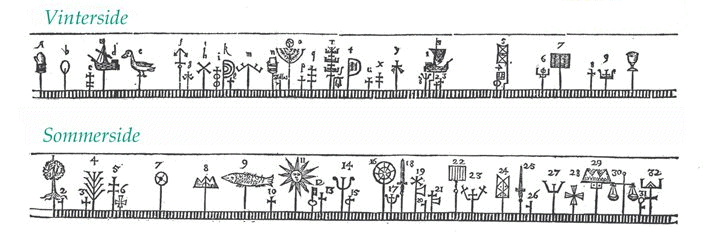by The Hanseatic Semiotic Traders League (a.k.a. Fiskekaker) Exquisitors: Brendan Howell, Amrita Kaur, Mark C. Marino, Eduardo Navas, Margaux Pezier,
Scott Rettberg, Morten Sorreime, Martin Swartling, Patricia Tomaszek, Rob Wittig
The Project | About | Instructions | Exquisitors

Exquisite_CodeThe Colonization of Memory is a procedural meditation on the way space becomes meaningful in the context of time and the way those meanings are overwritten with each new epoch. The chance operations of the procedure stood in for the aleatory path of history, while the writers played the historical subjects of those procedures. One rainy day in Bergen, Norway, a group of writers gathered to participate in the second Bergen exquisition to compose a story. An exquisition is an execution of a constraint-based writing project developed by Brendan Howell under the umbrella of exquisite_code. The first Norwegian exquisition was performed in 2010. (See photos from that first Bergen exquisition here.) Howell had originally devised exquisite_code with Sabrina Small as an Oulipo-inspired, procedural writing exercise, one inspired by live-coding in which the writing was produced in a performance, more akin to jazz improvisation than time-intensive, labored composition. In these performances, the writers and writing were subject to processes in code and encoded in a set of rules executed by a proctor. The resultant text, or output, was the product of the action of the procedure upon the writing objects or agents. The Norway exquisitions took this procedure out of a single room, or gallery in the case of one London instantiation, and spread the process across a geographic space, here the city of Bergen, drawing from the locales additional determining factors. It was important that the authors go to the sites and include aspects of the location they could only have observed by going there. Bergen, emblematic of so many European cities, bears the marks of a sequence of colonizers, conquerors, and cultural invasions, from the Vikings to the Nazis to Abba. This piece is a mediation of the way those occupations transformed and overwrote the spaces and the lives that traversed them. As the piece on this locative aspect, the exquisite_code project adapted some of the attributes of other distributive narratives, including Implementation, a sticker novel by Scott Rettberg and Nick Montfort, the LA Flood Project by LAInundacion, and Invisible Seattle, created by Rob Wittig with the other Invisibles and the city of Seattle. At the same time, it called for a Joycean attentiveness to space, a Ulyssean project, with slightly less OCD. We called this exquisition a locative corpse. Locative CorpseThe Locative Corpse is based loosely on the Surrealist game Exquisite Corpse (cadavre exquis). In the original variant, a partial illustration of a body is drawn on an area of a sheet of paper and the drawing is folded over, leaving only the terminating ends of the lines exposed for the next artist to extend. The exercise continues in rounds until the paper is filled and the combined “corpse” is revealed. (See a more detailed description of a “locative corpse” here.) Our conception of a Locative Corpse directs writers around a geographic area on a regular schedule between specified stations. At each station, the writers find on a sticker a bit of text, the last lines written from the last occupant which they then extend within their assigned constraints. A simple “lookup table,” cross-referencing the numbered index of the station with the occurrence of particular letters in the text just written, determines the next station for the writer. Writers carry all completed texts with them until the end of the exercise at which point the texts are recombined serially to produce one narrative for each location. In addition to location, three other constraints directed the authors: an epoch, an emotion, and a symbol from the primstav, a Norwegian runic calendar tied closely to religious holidays and the agrarian cycle. Having drawn their constraints, authors applied the same ones to each location they visited. Of course, chance and artful neglect of these rules also played their part, as the exquisitors at times could not locate the previous text or became lost like poets are wont to do. These constraints kept the authors locked in the symbolic order of Bergen’s calendar and history as they imagined stories that lived or would live in these spaces. Picking up where the last text had left off, the piece offers history as both palimpsest and relay race, the fragments linking disparate times becoming recontextualized, narrated into new and different times and tales.
|